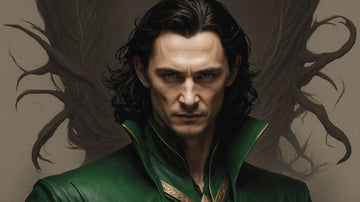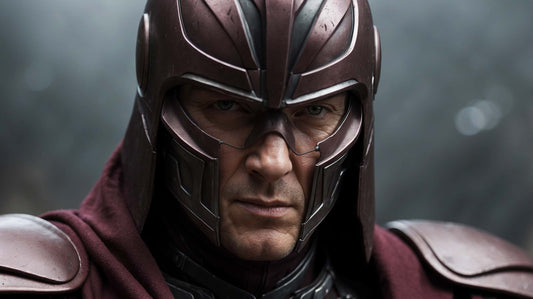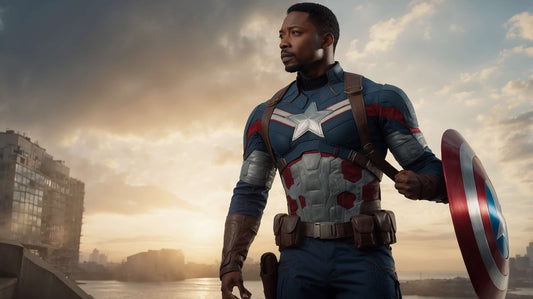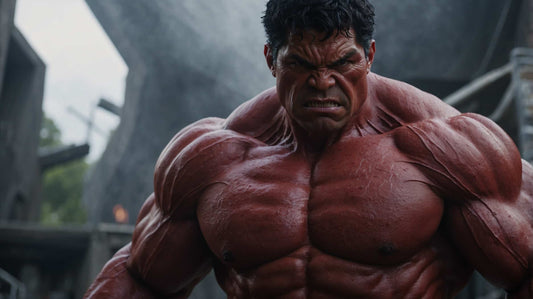
What are the origins of the Avengers?
The Avengers, one of the most iconic superhero teams in the Marvel universe, were born from the creative vision of two giants of the comic world. Since their debut in the 1960s, this team has captivated millions of fans and has evolved to become a central pillar of pop culture. Their origins differ between the comics and the MCU.
Who created the Avengers?
The Avengers were created by two emblematic figures of the comic industry: Stan Lee and Jack Kirby. In 1963, Marvel Comics sought to develop a superhero team that could rival DC Comics' Justice League.
Stan Lee, then editor-in-chief at Marvel, envisioned a group that brought together existing heroes to face threats that even the most powerful individuals could not handle alone. Jack Kirby, for his part, brought his unique artistic touch, bringing the team to life with dynamic and detailed illustrations.
The first issue of the Avengers was published in September 1963 under the title "Avengers #1". In this inaugural adventure, Stan Lee and Kirby introduced the concept of uniting heroes such as Iron Man, Thor, Hulk, Ant-Man, and Wasp to take on Loki, Thor's evil half-brother. This issue marked the beginning of a series of successes that propelled the team into legend.
The storytelling talents of Lee and Kirby's art laid the foundations for a saga that would deeply influence both the comic book world and later the cinema with the MCU.

Why the name Avengers?
The choice of the name "Avengers" stemmed from the desire to create a team of heroes dedicated to protecting Earth and avenging threats that could endanger it. According to Stan Lee, this term carried a strong and noble resonance, symbolizing avengers who rise against injustice.
The word "avenge" implied a proactive and collective mission, reinforcing the idea that team members support each other and act together to right wrongs.
From a marketing standpoint, the name Avengers also had the advantage of being short and impactful, facilitating its recall and appeal to the audience. Unlike other more complicated appellations, "Avengers" immediately evoked action and combat, key elements to attract comic enthusiasts.
In this sense, the name contributed to the series' success by imprinting the idea of an invincible alliance capable of overcoming any challenge.
Who are the original Avengers?
The original Avengers, introduced in "Avengers #1", consisted of iconic characters from the Marvel universe. The initial team was comprised of:
- • Iron Man (Tony Stark): The armored billionaire industrialist, a genius of technology.
- • Thor: The god of thunder, armed with his enchanted hammer, Mjolnir.
- • Hulk (Bruce Banner): The scientist with an explosive temper who transforms into an uncontrollable brute force.
- • Ant-Man (Hank Pym) and Wasp (Janet van Dyne): The scientist couple capable of changing size.
Although Captain America is often associated with the original Avengers, he did not join the team until the fourth issue. Found frozen in ice and brought back to life by the Avengers, Captain America, aka Steve Rogers, quickly became an indispensable member and a moral leader for the team.
The dynamics among these initial members were marked by internal tensions, particularly with Hulk, whose unpredictable nature created conflicts. These elements made the stories captivating and realistic, contrasting with the stereotypical depiction of superhero teams of the time.

Who is the leader of the Avengers?
The role of leader of the Avengers has evolved over the decades, but Captain America (Steve Rogers) remains the iconic and most respected leader. His ability to inspire his teammates and devise infallible strategies made him a natural leader.
Although Iron Man (Tony Stark) often took command during crises requiring technological and financial skills, it was Captain America's charisma and sense of honor that solidified his position at the head of the team.
In certain story arcs, members such as Thor or Black Panther have also taken the leadership due to their authority and experience. However, Captain America remains unique as a leader capable of maintaining unity and loyalty among heroes with very different personalities.
His leadership role transcends the comics and extends to the film adaptations of the Marvel Cinematic Universe (MCU), where he is portrayed by Chris Evans.
Who is the most famous Avenger?
Iron Man and Captain America often vie for the top spot as the most famous Avenger. However, with the advent of the MCU, Iron Man, portrayed by Robert Downey Jr., has gained worldwide fame that has transformed him into one of the most popular superheroes of modern history.
The 2008 movie "Iron Man", which paved the way for the MCU, played a key role in this popularity, catapulting Tony Stark to the top of the most recognized heroes.
On the other hand, Captain America remains deeply embedded in the collective imagination as the symbol of courage and justice. With his moral values and unwavering commitment, he embodies the very essence of heroic leadership.
Other members such as Thor, Hulk, and Black Widow have also gained popularity through the films, but Iron Man and Captain America remain the figureheads of the team (much to our friend Thor's chagrin!).

What are the differences between the MCU and the comics?
The Avengers have undergone major adaptations when transitioning from the pages of Marvel comics to the big screen in the Marvel Cinematic Universe (MCU). Although the MCU remains true to the essence of the team and its members, several notable differences exist between these two mediums.
1. The formation of the team : In the comics, the Avengers were formed in response to Loki's machinations in "Avengers #1". The MCU follows a similar pattern, but with some adjustments: Nick Fury, portrayed by Samuel L. Jackson, and the Avengers Initiative play a central role in forming the team, an aspect not present in the original comics.
2. The founding members : In the MCU, the initial Avengers include Iron Man, Thor, Hulk, Captain America, Black Widow, and Hawkeye. In the comics, Ant-Man and Wasp were part of the founding members, while Captain America didn't arrive until the fourth issue. This difference highlights the MCU's focus on already established and beloved characters.
3. Characterization and narrative arcs : The MCU adapts the personalities and journeys of the characters to better align with cinematic expectations. For example, Tony Stark is much more sarcastic and flamboyant in the films than in the comics of the 60s. Moreover, some narrative arcs, such as the origin of Ultron, are modified: in the comics, Ultron is created by Hank Pym, while in the film "Avengers: Age of Ultron", he is the work of Tony Stark and Bruce Banner.
4. The influence of S.H.I.E.L.D. and the government : In the MCU, the role of S.H.I.E.L.D. and government intervention, particularly through agreements like the Sokovia Accords, are very present. These aspects add a political dimension to the films that is not as pronounced in the original comic stories.
5. Dramatic arcs : The MCU places a strong emphasis on the coherence and interconnection of the films, creating stories that span several years. By contrast, the comics explore numerous alternative universes and timelines, offering greater flexibility and more varied plots.
These differences allow both versions of the Avengers to thrive, each with its own strengths and nuances. The films reach a broad audience with linear and breathtaking narratives, while the comics continue to captivate with complex stories and deep narrative arcs, giving fans the opportunity to explore different facets of the heroes they love.
By the team at MySuperSuit






